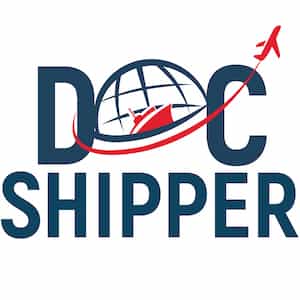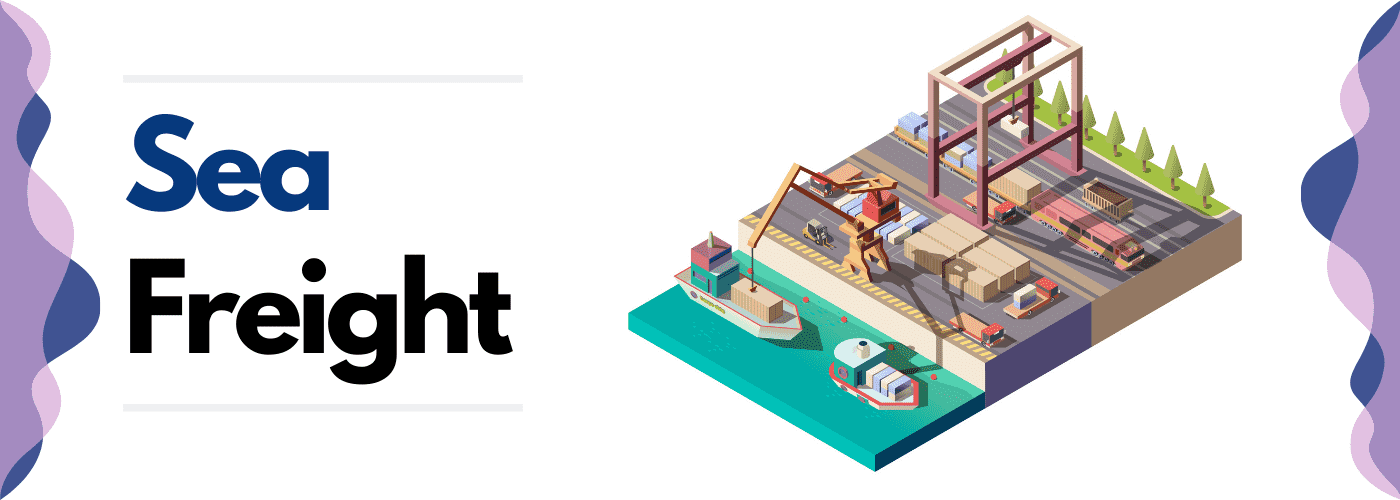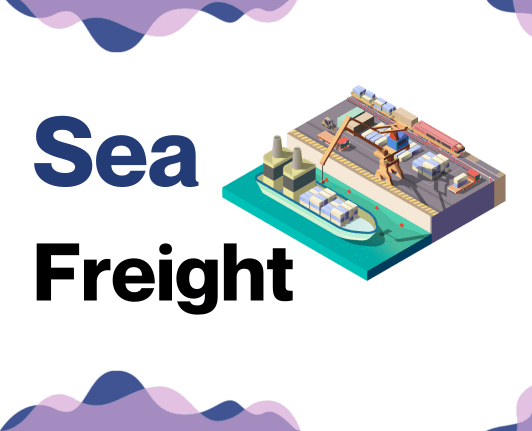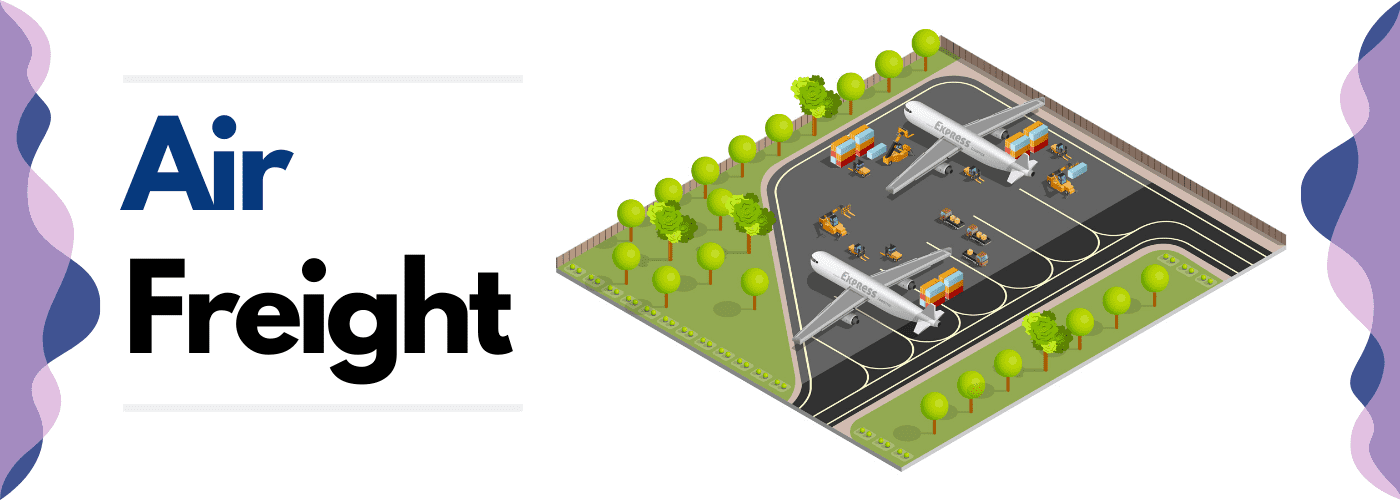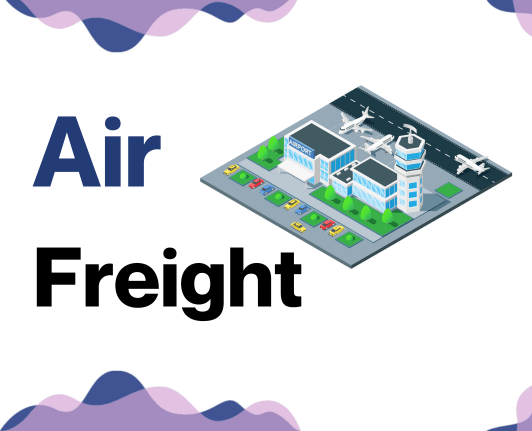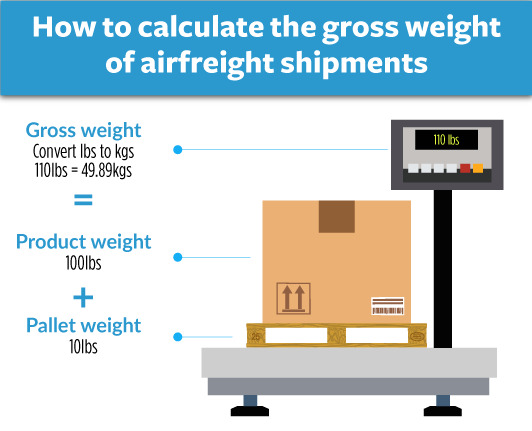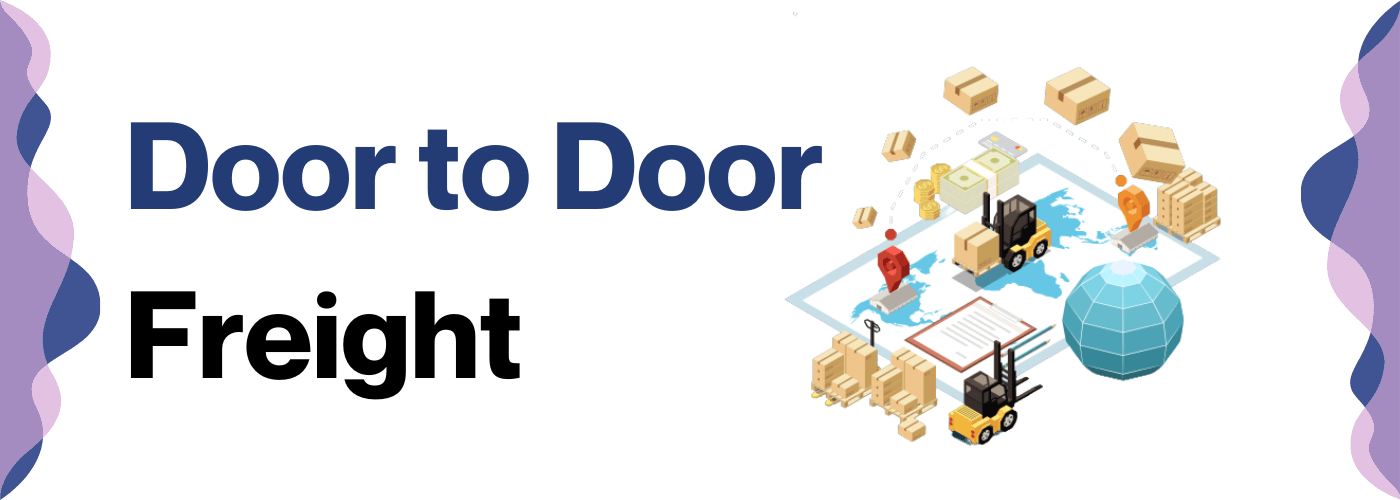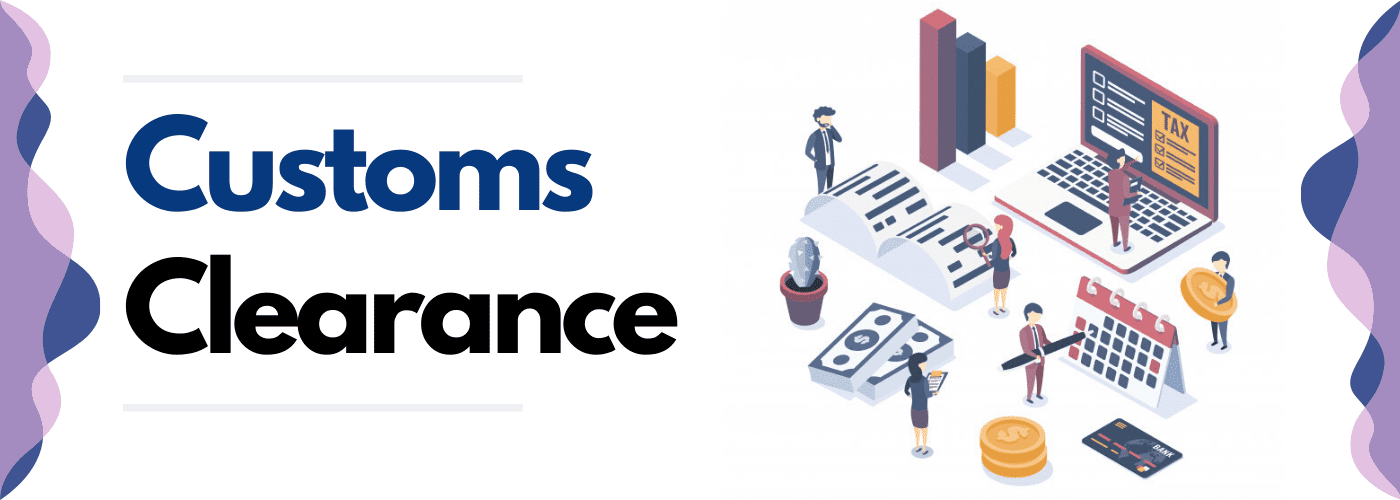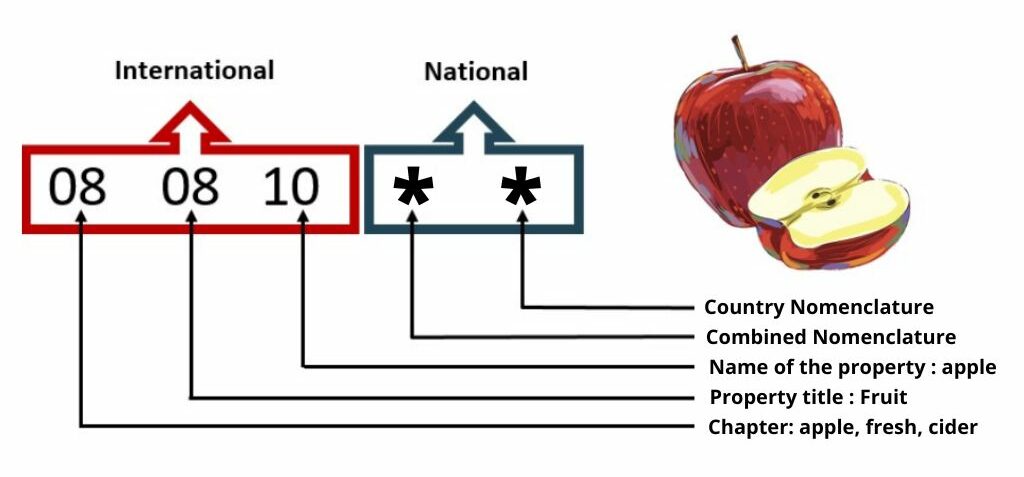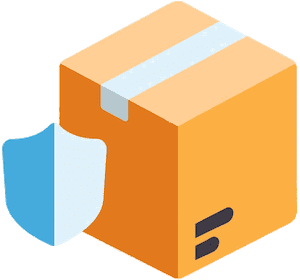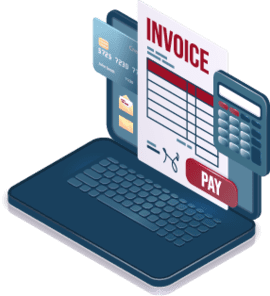If you've ever thought that shipping a container of goods from Malaysia to South Africa is as puzzling as a camel trying to disco dance, you're definitely not alone. Many businesses grapple with the complexity of determining rates, decoding transit times, and taming the beast of customs regulations. This guide is here to shed light on the winding road of freight shipping between these two vibrant economies. It will delve deeply into freight options to suit your business needs—in air, ocean, road, or rail. You'll understand the ins and outs of customs clearances, duties, taxes, and get practical business advice to make your transit as smooth as possible. If the process still feels overwhelming, let DocShipper handle it for you! We’re experts at streamlining every step, transforming the challenges into a competitive edge for your business.
Table of Contents
Which are the different modes of transportation between Malaysia and South Africa?
Sea or air? The journey between Malaysia and South Africa can feel as lengthy as a childhood summer. By air, we soar like a bird, reaching our destination in about 12 hours. But what about our heavier, larger shipments? They're akin to elephants, preferring the slower sea route, enjoying the six-week voyage. Neither borders nor distances deter these methods. The key is fitting your choices to the cargo's nature and urgency. Like choosing socks, the perfect fit matters. Whether bird or elephant, the choice is yours to suit your unique shipping challenges.
How can DocShipper help?
Planning to transport goods from Malaysia to South Africa? Count on DocShipper's wide-ranging expertise in logistics and customs clearance. Our dedicated team is ready to streamline your journey, ensuring your freight reaches its destination hassle-free. For a free estimate in less than 24 hours, contact us today. Need advice? Our consultants are just a call away.
DocShipper Tip: Sea freight might be the best solution for you if:
- You're dealing with hefty quantities or oversized goods. Sea transport is your go-to for maximizing space without stretching your budget.
- Time sensitivity isn't a concern for your shipment. Ocean freight is known for its leisurely pace, especially when compared to the speed of air or rail.
- Your supply chain connects key international harbors. This positions you to take full advantage of a wide-reaching network of ocean trade routes.
Sea freight between Malaysia and South Africa
Shipping goods by sea from Malaysia to South Africa isn't as daunting as you might think. It's bustling with trade activity between the Port Klang and Durban Port, connecting the dynamic industrial centres of both nations. While it might take longer, ocean freight is an affordable choice for those voluminous shipments, making it perfect for businesses sensitive to costing.
Ah, but that's where the simplicity ends, isn't it? The frequent challenges you might face, like those confusing customs clearance rules and the maze of paperwork, can truly test your patience. One small misstep can delay your shipment, inflate costs, and cause a logistical nightmare. Don't sweat it though! With the right mix of best practices and insider knowledge, which we'll unravel in this guide, these challenges can be transformed into effortless routine. After all, shipping should be as smooth as the calm sea on a sunny day! Let's embark on your hassle-free ocean shipping voyage. Stick around and get ready to sail through with us.
Main shipping ports in Malaysia
Location and Volume: Situated at the western part of Peninsular Malaysia, Port Klang is the nation's busiest port. It handles over 13.2 million TEU, making it a crucial gateway for trade in and out of the country.
Key Trading Partners and Strategic Importance: The port primarily functions as a local regional transshipment hub, connecting major players in Asia, Europe, and the Americas. Among the top trading partners are China, Singapore, and Japan.
Context for Businesses: If you're planning to tap into the Asian and global market, Port Klang, with its modern facilities and efficient service, might play a pivotal role in your shipping strategy. Its general-purpose cluster zones offer versatile business advantages.
Location and Volume: The Port of Tanjung Pelepas is located at the southern tip of Peninsular Malaysia, next to the busy Strait of Malacca. This strategic location enables the port to handle a substantial shipping volume of around 8.96 million TEU.
Key Trading Partners and Strategic Importance: She clearly focuses on the international transshipment, with a significant portion of its volume coming from trading partners such as China, Singapore, the United States, and Hong Kong.
Context for Businesses: With a goal of venturing into either the Asian or the global market, the Port of Tanjung Pelepas offers a strategic advantage due to its modern facilities and location close to the main shipping lane.
Location and Volume: Positioned on the Northwest coast of Peninsular Malaysia, Penang Port has a shipping volume of around 1.53 million TEU.
Key Trading Partners and Strategic Importance: The port mainly services the northern region of Malaysia and plays a crucial link with countries like China, Singapore, and Indonesia.
Context for Businesses: Importing or exporting to Northern Malaysia or seeking connections with local regions in Asia, the centrally located Penang Port could be an integral part of your shipping strategy.
Location and Volume: Located on the Southeast coast of Malaysia's Sarawak state, Bintulu Port generally has a lower shipping volume, concentrating on the trade of particular commodities such as LNG and coal.
Key Trading Partners and Strategic Importance: Key trading partners include Japan, Korea, and Taiwan, with primary trading commodities being energy resources.
Context for Businesses: If your operations involve energy trading, Bintulu Port might be a crucial point in your shipping strategy due to its specialisation in energy commodities.
Location and Volume: Situated in Pasir Gudang, in southern Peninsular Malaysia, Johor Port has a shipping volume of more than 900,000 TEU.
Key Trading Partners and Strategic Importance: Its strategic location on the eastern side of the Straits of Johor provides direct links to major international shipping lanes, connecting with vital trading partners such as China, Singapore, and Indonesia.
Context for Businesses: Johor Port could be a significant link in your shipping strategy, particularly if you're targeting the Southeast Asia region. It offers a variety of cargo and logistics services.
Location and Volume: Located on the East coast of Peninsular Malaysia, Kuantan port has a smaller shipping volume but is the gateway to the South China Sea.
Key Trading Partners and Strategic Importance: The port adds a significant value to businesses dealing with countries in the South China Sea region, mainly China.
Context for Businesses: Aiming for business extension in the South China Sea region, Kuantan Port's strategic location can be highly beneficial for your shipping plans. It also boasts dedicated liquid and dry bulk facilities.
Main shipping ports in South Africa
Port of Durban
Location and Volume: Situated on the east coast of South Africa, its strategic positioning makes it an important hub in international trade, handling more than 2.9 million TEUs per year.
Key Trading Partners and Strategic Importance: The key trading partners of this port are countries from Asia, Europe, and the Americas. Coupled with its status as the busiest container Port in Africa, it is highly strategic for businesses looking to access the African market.
Context for Businesses: If your aim is to expand your operations to Africa or trade with its key partners, the Port of Durban, with its impressive infrastructure and high volume of shipping, might just be the channel you need.
Port of Cape Town
Location and Volume: Located in the southwestern part of the country in the Table Bay, it has a yearly capacity of over 14 million tons of cargo and 900,000 TEUs.
Key Trading Partners and Strategic Importance: This port maintains strong ties with trading partners in Asia, Europe and America. Its state-of-art facilities equipped handle container, bulk, and automotive cargo, enhancing its strategic importance.
Context for Businesses: When planning to reach the southwestern regions of Africa, or importing/exporting bulk commodities like fruits, minerals, or vehicles, the Port of Cape Town is your go-to port.
Port of Richards Bay
Location and Volume: Located on the East Coast of South Africa, it is one of the country's largest ports and is geared to handle over 100 million tons of cargo per annum.
Key Trading Partners and Strategic Importance: Serving regions in Asia, Europe and America, the port has channels with a depth of 19 meters, which allows larger vessels, particularly those dealing in bulk commodities.
Context for Businesses: If your trade involves larger vessels or you deal in bulk commodities, the Port of Richards Bay's significant capacity and depth might serve your shipping strategy well.
Port of Saldanha
Location and Volume: It is situated 105 km north of Cape Town and is the deepest and largest natural port in the southern hemisphere, with a significant export capacity focused on iron-ore.
Key Trading Partners and Strategic Importance: This port is an essential link to trading partners in the Atlantic basin, Europe and Asia. It also has a strategic role in the export of iron ore from South Africa.
Context for Businesses: If your organization is involved in the export of iron ore or other bulky raw materials, Port of Saldanha, with its unique depth and location could be beneficial for your business strategy.
Port of Port Elizabeth
Location and Volume: Situated along the southeastern coast of the country, it moves upwards of 11 million tons of cargo annually, including containers, bulk and break-bulk cargoes.
Key Trading Partners and Strategic Importance: Serving trading partners from across the globe, particularly Asia, Europe, and America. Port Elizabeth is crucial for the automotive industry due to its proximity to manufacturing plants.
Context for Businesses: If your business centers around automotive components, or requires diverse cargo handling, the Port of Port Elizabeth stands as a logistic linchpin for your operations.
Port of East London
Location and Volume: The Port of East London is ideally situated midway between Durban and Cape Town, handling close to 3 million tons of cargo annually.
Key Trading Partners and Strategic Importance: It has robust ties with Asia, Europe, and North America. Notably, East London is South Africa's only river port, making it uniquely equipped to handle certain types of cargo.
Context for Businesses: If you're exploring multiple transportation options, or have cargo types suited for river transportation, the Port of East London's unique capabilities might fit your shipping strategy perfectly.
Should I choose FCL or LCL when shipping between Malaysia and South Africa?
Choosing between full container load (FCL) and less than container load (LCL), also known as consolidation, is a vital decision when shipping from Malaysia to South Africa. This choice directly impacts cost, delivery time and the success of your shipment. Let's dive in to understand these options better, enabling you to make a well-informed decision that best serves your specific shipping needs.
LCL: Less than Container Load
Definition: LCL, or Less than Container Load, is a method of shipping where multiple shippers share space in a single container. This is particularly useful when the freight volume is not large enough to warrant a full container.
When to Use: LCL shipment is a suitable option when your cargo is less than 13, 14, or 15 cubic meters (CBM). Its flexibility and cost-effectiveness make it an optimal choice for businesses with low volume goods to transport.
Example: Consider a small business in Malaysia looking to send artisanal goods to a boutique in South Africa. The business needs only four cubic meters of space. It's not cost-effective to hire a whole container, so they opt for LCL freight, sharing container space with other businesses.
Cost Implications: The main cost advantage of LCL freight is that you only pay for the space your goods occupy. Rather than bearing the cost of a full container, you share it with others. However, there might be additional handling charges during loading and unloading as the container holds goods from different shippers.
FCL: Full Container Load
Definition: FCL, or Full Container Load, is a type of sea freight where a single container is exclusively assigned to a single consignee.
When to Use: Opt for FCL shipping when your cargo volume is more than 15 cubic meters (CBM). Choosing FCL will not only provide cost efficiency for larger volumes but also ensures safety, since your goods will be sealed within the container from origin to destination.
Example: Let's say you're a furniture manufacturer in Malaysia shipping a full load of tables and chairs to a South African retailer. If your cargo fills a 20'ft or a 40'ft FCL container, it's best to book an FCL shipping slot. You'll be getting an FCL shipping quote that's cheaper per unit, compared to sharing a container (LCL).
Cost Implications: Even though the initial FCL shipping quote might seem high, it offers better value for larger volumes. For instance, while a 20'ft container might cost more than LCL at first glance, the cost per CBM often drops significantly when fully utilized, making FCL a more cost-effective choice.
Unlock hassle-free shipping
Take the headache out of cargo shipping with DocShipper, your trusted freight forwarder. Our ocean freight experts analyze key factors like your cargo size, time sensitivity, and budget to recommend the optimal shipping method—consolidation or full container—from Malaysia to South Africa. Don't leave your sea freight to chance. Contact us now and sail smoothly with our free, no-obligation estimate.
How long does sea freight take between Malaysia and South Africa?
Sea freight shipping between Malaysia and South Africa generally requires an average time frame of around 20-30 days. However, bear in mind that these transit times can fluctuate based on factors such as the specific ports utilized, the weight, and the type of goods being shipped. For a precise estimate tailored to your needs, it's advised to touch base with a freight forwarder like DocShipper.
Here's a general representation of expected transit times for the primary sea freight ports in both countries:
| Origin Port (Malaysia) | Destination Port (South Africa) | Average Transit Time (Days) |
| Port Klang | Durban | 19 |
| Port Klang | Cape Town | 22 |
| Penang Port | Durban | 20 |
| Penang Port | Cape Town | 22 |
*Please note that these are average times and actual durations may vary. It is suggested to double-check with your freight forwarder for specifics.
How much does it cost to ship a container between Malaysia and South Africa?
Deciphering the cost of shipping a container from Malaysia to South Africa can be complex due to factors like Point of Loading and Destination, carrier preference, nature of your goods, plus ever-changing monthly market conditions impacting ocean freight rates. It's like aiming at a moving target - every business, every shipment has its unique price! But don't worry, our dedicated shipping specialists are committed to guiding you through this process and ensuring you receive the best possible shipping cost tailored to your specific needs. At our company, we quote each case individually, putting your interests first. Trust us, we make shipping a lot less intimidating and a lot more approachable.
Special transportation services
Out of Gauge (OOG) Container
Definition: OOG containers are especially designed for cargo that doesn't fit within standard container dimensions, popularly termed as 'Out of gauge cargo’. These can accommodate wide, long or high goods that exceed ordinary container measurements.
Suitable for: Heavy machinery, industrial equipment, oversized goods or objects that require special handling.
Examples: Construction equipment like cranes, large trucks, tractors, pre-fabricated units, windmill propellers.
Why it might be the best choice for you: If your cargo exceeds standard dimensions and needs special handling, using an OOG container can ensure safe transport, while providing enough space to hold the goods properly.
Break Bulk
Definition: Break bulk shipping refers to cargo that is too large or heavy to be loaded into containers and hence is loaded individually onto the vessel.
Suitable for: Goods that cannot be divided into smaller units, extremely large machinery or equipment.
Examples: Large turbines, generators, yachts, industrial boilers and timber logs.
Why it might be the best choice for you: If your products are not suitable for containers and you need to transport several large items together, break bulk shipping may be the most efficient and cost-effective way to get them to South Africa.
Dry Bulk
Definition: Dry bulk shipping refers to the transportation of homogeneous commodities in large quantities. These goods are usually poured directly into the ship’s hold as a loose cargo load.
Suitable for: Grain, coal, cement, ores, or any other similar raw material goods.
Examples: Mining industry products, agricultural products like wheat or rice, cement for construction industry.
Why it might be the best choice for you: If you’re in an industry that deals with homogeneous raw materials and you need to transport them in large quantities, sending your goods via dry bulk shipping may be the most financially and logistically sensible choice.
Roll-on/Roll-off (Ro-Ro)
Definition: Ro-ro vessel is a ship designed to carry wheeled cargo that can be driven on and off the ship on their own wheels or using a platform vehicle. This kind of maritime transportation is commonly used for cars, trucks, semi-trailer trucks, trailers or railroad cars.
Suitable for: Motor vehicles, large equipment, machinery on wheels.
Examples: Cars, trucks, tractors, trailers, railway wagons, heavy machinery.
Why it might be the best choice for you: If your goods are motorized and need the utmost care while loading or unloading, the Ro-Ro method provides the safest and most efficient transportation method available.
Reefer Containers
Definition: Reefer containers are refrigerated containers used to transport temperature-sensitive goods that require a specific temperature during transportation.
Suitable for: Perishable items, food or non-food.
Examples: Fruits, vegetables, dairy products, meat, fish, pharmaceutical products.
Why it might be the best choice for you: If your goods need to be transported at a maintained temperature to prevent spoiling or damage, reefer containers provide a controlled environment for your temperature-sensitive goods.
At DocShipper, we are committed to tailoring the best shipping solutions for your business needs. Get in touch now to receive a free shipping quote in less than 24 hours!
DocShipper Tip: Air freight might be the best solution for you if:
- You're pressed for time or facing a non-negotiable deadline. Air freight delivers unparalleled speed when it comes to transit times.
- Your shipment is modest in size, falling under 2 CBM. Air freight is particularly well-suited for these smaller consignments.
- Your supply chain includes destinations that are off the beaten maritime or rail paths. Air freight gives you access to a comprehensive global airport network.
Air freight between Malaysia and South Africa
If you're shipping high-value items like electronics or pharmaceuticals from Malaysia to South Africa, air freight is your speediest and most reliable option. Picture it like this: Instead of waiting for weeks on a sluggish snail-like ship, your parcel hops onto a fast-flying bird - it's a race, and the bird always wins.
But, hopping onto that speedy bird requires some knowledge and prep work; skipping this step can lead to hefty prices. Imagine estimating the cost of your luggage using an incorrect weight measure, you'd surely be in for a surprise during check-in. Similarly, with air freight, unexpected costs can pop up if you're unaware of best practices, like using the volumetric weight formula. In the next section, we'll ensure you avoid these common pitfalls and make your air freight journey as smooth as possible.
Air Cargo vs Express Air Freight: How should I ship?
Choosing the right shipping method for your goods can be puzzling, with air cargo and express air freight between Malaysia and South Africa both having benefits. Picture this: air cargo is like booking a seat for your goods on a commercial airline, while express air freight is more like chartering an entire plane, dedicated solely to your cargo. In this section, we'll help break down the pros and cons, offering a tailored guide to make your shipping decision easier.
Should I choose Air Cargo between Malaysia and South Africa?
Air cargo between Malaysia and South Africa offers a cost-effective and reliable shipping solution, especially for weights exceeding 100/150 kg (220/330 lbs). Major players like Malaysia Airlines and South African Airways provide extensive cargo services with an impressive network. Yet, anticipate slightly longer transit times due to airlines' fixed schedules. Assessing your budget and shipment urgency against these factors ensures you're making a beneficial choice. Visit the official websites of Malaysia Airlines and South African Airways for more details. Choose air cargo for a balance of affordability and reliability.
Should I choose Express Air Freight between Malaysia and South Africa?
Express air freight, conducted by specialized services like FedEx, UPS, or DHL, involves dedicated cargo planes without passengers for high-speed delivery. This could be your optimal choice if your shipments fall under 1 CBM or 100/150 kg (220/330 lbs). The distinct advantages of this service include fast, reliable delivery and detailed tracking, making it perfect for urgent or time-sensitive shipments. It's often chosen for valuable or fragile items too. So, if speed and security are paramount for your Malaysia-South Africa shipment, express air freight may suit you best.
Main international airports in Malaysia
Kuala Lumpur International Airport (KLIA)
Cargo Volume: KLIA handled over 726,000 metric tons of cargo in 2019, making it the busiest airport in Malaysia for freight traffic.
Key Trading Partners: Primary trading partners include China, USA, Japan, Singapore, and Thailand.
Strategic Importance: Besides being an integral economic driver for Malaysia as a whole, KLIA's central geographic location within Asia makes it a key transit point for numerous global shipping routes.
Notable Features: KLIA's cargo area, known as the Advanced Cargo Centre, spans over 60 acres and houses dedicated facilities for perishable cargo, valuable cargo, and even live animals, thus ensuring versatility in freight handling.
For Your Business: If you're shipping a diverse array of goods, KLIA's expansive facilities and robust handling capabilities may perfectly suit your needs, while its extensive list of global connections can ensure your business enjoys far-reaching accessibility.
Penang International Airport (PEN)
Cargo Volume: In 2019, PEN handled over 172,000 metric tons of cargo, highlighting its significant operations in the freight sector.
Key Trading Partners: Main trading partners include China, Singapore, Thailand, Australia, and Indonesia.
Strategic Importance: PEN serves as the gateway to northern Malaysia and is strategically positioned within the tech industry's supply chain, given its proximity to the global electronics industry in the Penang Bayan Lepas Free Industrial Zone.
Notable Features: PEN boasts a new cargo center that handles all import, export, and transshipment cargo. It's equipped with modern facilities that enhance efficiency and ensure secure handling and storage.
For Your Business: If you're involved in the tech industry, PEN’s prime location and modern facilities can be highly beneficial, allowing for efficient and cost-effective cargo transfers.
Senai International Airport (JHB)
Cargo Volume: In 2018, JHB handled over 10,000 metric tons of cargo, driven by robust regional e-commerce growth.
Key Trading Partners: Predominantly serves regional and domestic markets, with key partners including Singapore, Indonesia, and domestic routes within Malaysia.
Strategic Importance: JHB is strategically located in the southern state of Johor, adjacent to Singapore, a major Asian shipping hub. This location enhances JHB's capacity to tap into Singapore’s extensive maritime and air network.
Notable Features: JHB is home to a Free Zone, offering a variety of advantages for logistics businesses, including tariff- and duty-free benefits.
For Your Business: If your operations focus on regional e-commerce or you're keen to leverage proximity to Singapore's prominent shipping lanes, JHB’s strategic location and Free Zone benefits could be ideal for your business.
Kota Kinabalu International Airport (BKI)
Cargo Volume: BKI handled 26,000 metric tons of cargo in 2019.
Key Trading Partners: Main trade partners are domestic hubs within Malaysia, supplemented by key routes to China, Korea, and Japan.
Strategic Importance: BKI is Malaysia's second-largest airport and serves as a key gateway into the island of Borneo.
Notable Features: BKI has a dedicated cargo village catering to both international and domestic cargo services.
For Your Business: For businesses shipping to or from Borneo Island or looking to capitalize on the growing tourism industry there, BKI's capacity and strategic location on the island can present lucrative opportunities.
Kuching International Airport (KCH)
Cargo Volume: KCH handled 25,000 metric tons of cargo in 2019.
Key Trading Partners: Predominantly serves domestic routes within Malaysia and key regional markets such as Singapore and Indonesia.
Strategic Importance: KCH is central to the development of the state of Sarawak, serving as an important hub for cargo and passenger movement.
Notable Features: KCH boasts a newly upgraded cargo complex offering more efficient freight handling services.
For Your Business: If you’re focusing on the domestic Malaysian market or need access to key locations in Sarawak, KCH’s improved facilities and vital role in the region could provide essential connections for your operations.
Main international airports in South Africa
O.R. Tambo International Airport
Cargo Volume: Handling over 400,000 tons annually.
Key Trading Partners: Primarily trades with Asia, Europe, and North America.
Strategic Importance: Considered one of Africa's busiest air hubs, and a key access point for international cargo entering the continent.
Notable Features: Offers comprehensive logistics infrastructure and a state-of-the-art perishable products handling facility.
For Your Business: The airport's extensive air network could help your business reach markets worldwide, and its advanced facilities will ensure your products are handled with utmost care.
Cape Town International Airport
Cargo Volume: Handles over 120,000 tons of cargo annually.
Key Trading Partners: Major trading partners include Europe, Asia, and other African nations.
Strategic Importance: It is South Africa's second largest airport, and a prominent gateway to the southern region of Africa.
Notable Features: Boasts advanced cargo facilities including cold storage, express cargo, and live animal transport.
For Your Business: Its strategic location and the wide network of flights could enable efficient delivery of goods to various global destinations.
King Shaka International Airport
Cargo Volume: Processes close to 100,000 tons of cargo every year.
Key Trading Partners: Predominantly trades with Asia, North America, and some parts of Europe.
Strategic Importance: A well-connected hub in Durban that supports the high volume of sea trade in the region.
Notable Features: It has modern cargo handling facilities with room for expansion, catering to diversified cargo types.
For Your Business: If your business involves sea and air freight, this airport’s close proximity to one of Africa’s busiest ports could be highly beneficial.
Port Elizabeth International Airport
Cargo Volume: Handles over 30,000 tons of cargo annually.
Key Trading Partners: Mainly trades with countries in Africa, Asia, and Europe.
Strategic Importance: Vital for supporting local industries and connecting Eastern Cape to the international market.
Notable Features: Despite being small, this airport delivers efficient cargo operations and can handle specialized cargo.
For Your Business: Its efficient and lower congestion operations could provide faster shipping times and reduce overall shipment costs.
Pilanesberg International Airport
Cargo Volume: Data not publicly available.
Key Trading Partners: Collaborates predominantly with Middle Eastern and African countries.
Strategic Importance: Facilitates commerce in North West Province and acts as secondary airport to Johannesburg for cargo operators.
Notable Features: Driven by efficiency, they offer competitive turnaround times and adaptability to handle charter operations.
For Your Business: If looking to access markets in North West Province, or diversifying routes to Johannesburg, Pilanesberg offers efficiency and flexibility.
How long does air freight take between Malaysia and South Africa?
The journey from Malaysia to South Africa by air can typically take around 4-6 days. However, this estimate can fluctuate based on the variables like selection of specific airports, the weight, and the type of goods being shipped. A shipment of heavyweight machinery, for instance, could potentially extend this timeline. Remember that for meticulous timeframes and effective handling of your air freight needs, partnering with a reliable freight forwarder like DocShipper is recommended.
How much does it cost to ship a parcel between Malaysia and South Africa with air freight?
Shipping rates for air freight parcels between Malaysia and South Africa broadly range from $3 to $10 per kg. Determining a precise cost is intricate due to factors like distance from departure and arrival airports, parcel dimensions, weight, and the type of goods. Rest assured, our team is committed to providing the most affordable pricing, and each quote is customized to your specific needs. No parcel is the same, and neither are our shipping quotes. Contact us today and receive your free, bespoke quote in less than 24 hours. Let us navigate the complexities of international shipping for you.
What is the difference between volumetric and gross weight?
Let's dive into understanding gross weight and volumetric weight - crucial concepts for air freight shipping. The gross weight is the actual weight of your shipment, easy enough, including all packaging and labeling. On the contrary, volumetric weight, also known as dimensional weight, considers the space your package occupies in the aircraft.
Calculation for these weights varies in Air cargo and Express Air Freight services. In Air Cargo, gross weight is simply the total weight in kg. For volumetric weight, you'd multiply the dimensions of your package (length, width, and height in centimeters) and then divide that total by 6,000.
For example, let's consider a shipment with a gross weight of 65kg, and the dimensions are 90cm x 50cm x 40cm. The volumetric weight would be (90 x 50 x 40) / 6000, which equals 30kg.
For Express Air Freight services, the gross weight is straight forward, it's again the total weight of the shipment in kg. The calculation of volumetric weight differs slightly. You'd take the product of the dimensions of the package (still length, width, and height but this time in cm) and divide by 5,000.
With the same example, the gross weight still being 65kg and using the same dimensions, the volumetric weight for Express Air Freight is (90 x 50 x 40) / 5000, equalling 36kg.
65kg is approximately 143lbs, 30kg weight is 66lbs and for 36kg, it translates to 79lbs.
These calculations play a key role as freight charges are often determined by the higher of the gross weight or the volumetric weight. This method ensures charges accurately reflect both the weight and amount of space taken up by the shipment, optimizing cargo space.
DocShipper tip: Door to Door might be the best solution for you if:
- You value convenience and want a seamless shipping process, as door-to-door takes care of every step from pickup to delivery.
- You prefer a single point of contact, as door-to-door services typically provide a dedicated agent to handle all aspects of the shipment.
- You want to minimize the handling of your goods, reducing the risk of damage or loss, as door-to-door minimizes transitions between different modes of transport.
Door to door between Malaysia and South Africa
In the logistics world, 'Door to Door shipping' is an all-inclusive service where your goods are picked up from one location (like your factory) and delivered right to your recipient's doorstep, halfway across the globe! In our case, from Malaysia to South Africa. It's hassle-free, time-saving and can really streamline your business processes. Let's dive into the specifics now, shall we?
Overview – Door to Door
As a business owner, the shipping hassles between Malaysia and South Africa can seem daunting, right? Well, our door-to-door shipping service is a stress-free solution that clients like you seek most. Its advantages are plenty - no intermediary handling, better cost control, and coordinated logistics - merely to name a few! Of course, it does come with its challenges, especially if customs clearance procedures aren't your forte. But fear not, the DocShipper team in each country manages all the complex details, making it a smooth experience. Be prepared, however, for slightly higher costs - a small price for immense convenience!
Why should I use a Door to Door service between Malaysia and South Africa?
Ever felt like shipping goods was a game of Ping-Pong, but you're juggling the paddles, balls, AND the table? Door to Door services between Malaysia and South Africa take the chaos out of this equation and pump in efficiency. Let's break it down into five reasons to embrace this method.
1. Stress Reducer: Just imagine sitting back while professionals take care of picking up goods, completing custom procedures, and ensuring safe delivery. They oversee all the detailed work and you get peace of mind. Who doesn't love that?
2. Always on Time: Have a strict deadline? Don't sweat it. Door to Door services make sure your freight meets time constraints, securing your reputation of never missing a delivery.
3. Specialist Care: Shipping machinery or specialist equipment? A generic method might give your cargo a less-than-ideal journey. Door to Door service caters to your unique shipping requirements, ensuring your complex cargo gets special attention.
4. Convenience King: This service controls the complete journey, from loading to unloading. It includes inland trucking, making it supremely convenient. You get the luxury of shipping goods without the logistics nightmare!
5. Final Destination Delivery: No need for additional carriers or the hassle of coordinating the last leg of delivery. Door to Door services handle the entire spectrum, right up to the final destination.
So, if you're shipping between Malaysia and South Africa, consider Door to Door a hassle-free fix to your freight forwarding frets! It's a master stroke that simplifies logistics, boosts reliability, and adds a layer of convenience unparalleled in the shipping landscape.
DocShipper – Door to Door specialist between Malaysia and South Africa
Experience complete peace-of-mind with DocShipper's seamless door-to-door shipping from Malaysia to South Africa. Our professional team expertly oversees every step of the process - from dedicated packing to the selection of optimal shipping methods, and from fuss-free customs clearance to final delivery. You won't have to lift a finger. Plus, your shipping journey is guided by a dedicated Account Executive, ensuring personalized attention and deep domain knowledge at your disposal. Reach out now for a free, no-obligation estimate within 24 hours or avail a free consultation from our seasoned consultants.
Customs clearance in South Africa for goods imported from Malaysia
Understanding customs clearance—a critical procedure when importing goods from Malaysia to South Africa—can be a challenging task. This process, shrouded in complexities, can include unexpected fees and charges. It's vital to grasp customs duties, taxes, quotas, and licenses to avoid the risk of your shipment being held up in customs. Without this knowledge, potential detours on your logistics journey could leave a dent in your pocket. Fear not—our forthcoming sections provide a comprehensive guide, helping you navigate these rocky waters with ease. Plus, DocShipper stands ready to assist you, managing the entire process for any goods worldwide. To estimate your project budget, contact our team with your goods' origin, their value, and the HS Code. Let's turn these potential pitfalls into smooth sailing together.
How to calculate duties & taxes when importing from Malaysia to South Africa?
One crucial step to ensure smooth shipment from Malaysia to South Africa is correctly estimating the customs duties and taxes imposed on your goods. To calculate customs duties accurately, you'll need to equip yourself with some crucial information: the country of origin, the Harmonized System (HS) code of your goods, the customs value, and the applicable tariff rate. Apart from these, bear in mind there may be other taxes and fees that might influence the final amount you'll need to pay.
The starting point in this calculation journey is identifying the country of origin - that's where your goods were manufactured or produced. It's crucial to get this right because it directly influences the tariff rates and can ultimately make a huge difference in your total shipping costs. Whether you're shipping machinery parts or apparel, knowing where your goods come from is your first step towards a successful, stress-free shipping endeavor.
Step 1 - Identify the Country of Origin
Identifying the Country of Origin - it may sound obvious, but it's your first crucial move. Here are five reasons why. First, it solidifies the legal origin of the goods, necessary for any shipment. Second, it aids in getting the HS code, which is your golden key to customs.
Third, this helps you avoid potential hitches - not every product gets greenlighted by South African customs. Fourth, some goods may require import licenses. Lastly, misrepresentation of the country origin can result in severe penalties.
To sweeten the trade deal, Malaysia and South Africa have bilateral and multilateral agreements, which can significantly lower or even waive the customs duties. APTA and TIDCA are just a couple of them.
Be aware, South Africa has tight control on certain goods from Malaysia such as textiles, steel products, and some types of electronics. Consult a reliable customs broker to ensure smooth sailing. You're one step closer to mastering your import game.
Step 2 - Find the HS Code of your product
The Harmonized System (HS) Code is a standardized system of names and numbers for identifying your products. This international nomenclature developed by the World Customs Organization is universally accepted and provides a language that every customs officer, regardless of country, can understand. In the shipping world, it's essential as it helps in determining customs duties and taxes, regulations, licenses required, and much more.
One of the simplest ways to obtain your HS code is by asking your supplier. They are usually well-versed with the kind of goods they're exporting and the corresponding regulations.
If the aforementioned method isn't plausible for you, don't stress, as we've got an easy step-by-step guide ready for you.
Step one: use an HS lookup tool. A good choice would be the Harmonized Tariff Schedule, that we have personally found to be quite useful.
Step two: in the search bar, simply input the name of the product you aim to ship.
Final Step: refer to the Heading/Subheading column of your search results. This is where your desired HS code will appear.
Something vital to be mindful of, though, is ensuring accuracy in your HS code selection. A warning to heed is that improper or inaccurate use of the HS Code could result in unnecessary shipping delays, with the potential for fines.
Here's an infographic showing you how to read an HS code. Remember, accuracy and attention to details can save you a lot of trouble and money.
Step 3 - Calculate the Customs Value
You may wonder, why is the customs value different from my product value? Well, the customs value is not just about the product’s price, but it has a wider scope. It’s the CIF value – a combination of the product cost, insurance, and freight charges.
For instance, imagine you're importing furniture from Malaysia with a product value of $1000. To get it to South Africa, you pay $500 for shipping and $100 for insurance. Combine them, and your customs value is $1600, not just the $1000 you paid for the goods.
Crucially, customs duties and charges are calculated based on this customs value, not the product price alone.
Understanding this helps prevent surprises later and aids in better financial planning for your shipments, don't you think? Keep in mind that our calculations are in USD for consistency.
Step 4 - Figure out the applicable Import Tariff
First, let's understand what an import tariff is. It's a tax applied on goods that are imported from one country to another - a cost that importers need for bringing commercial goods into a country. In South Africa, the import tariffs are largely part of a system known as the Harmonized Commodity Description and Coding System (HS), which is utilized globally.
To figure out what your import tariff may be when importing from Malaysia, follow these steps. Utilize your previously identified HS Code for your particular product, and input this into the South African Revenue Service's Tariff Book.
For instance, if you're shipping wristwatches from Malaysia with an HS code 9101.11, you would insert the code and find the corresponding tariff. Assume, the Tariff Book gives you a duty rate of 20%.
Next, take into consideration your Cost, Insurance, and Freight (CIF) value. Let's say, for our wristwatches, it comes out to be $20,000. Your import duty would be calculated as:
Duty = Duty rate x CIF value of goods
= 20% x $20,000
= $4,000
Remember that these taxes can significantly impact your bottom line, and so it's crucial to take them into account when planning your shipping strategy from Malaysia to South Africa.
Step 5 - Consider other Import Duties and Taxes
When importing goods from Malaysia to South Africa, apart from the standard tariff rates, there are potential additional duties to account for. These can significantly impact your expenses, so being aware of them is crucial.
One such duty is the anti-dumping tax. If, for instance, you plan on importing steel and the South African government is protecting its local steel industry against cheap imported steel, you could face an anti-dumping tax.
Another expense to monitor is the Excise duty, applicable to certain goods such as alcohol or tobacco. So if you’re shipping a container of whiskey, brace yourself for an Excise duty.
Most importantly is the Value Added Tax (VAT). At 15% (though rates can vary), this is calculated on the customs value of the goods, plus freight and insurance, plus all the duty payable. Let's say customs value of your shipment is $10,000 with freight and insurance at $1,000, and $500 payable for other duties. The VAT would be 15% of ($10,000 + $1,000 + $500) = $1725.
Remember, these are just illustrative figures and the actual rates can differ. Also, different types or categories of goods can attract varying rates, or even exemptions. Always consult with a professional or legal advisor for precise figures and advice.
Step 6 - Calculate the Customs Duties
In the quest to unlock the customs code in South Africa, the sixth step is to piece together the customs duty. Think of it as a tax imposed on imports, calculated based on the customs value of the goods.
Here's the formula: Customs Duties = Duty Rate (%) x Customs Value (USD). Easy, right? Let's illustrate this with three scenarios on goods you've shipped from Malaysia to South Africa.
Scenario 1: Consider you've shipped machinery parts, customs value of $10,000, with a duty rate of 15% but no VAT. Here, your customs duties amount to $1,500.
Scenario 2: Here, with a similar shipment, the same customs value, a 15% duty, and a VAT rate of 15%, your customs duties become $1,500 and your VAT $1,725.
Scenario 3: Now, assume you have a durable goods shipment bearing a customs value of $15,000, and encounter a 12% duty rate, 15% VAT, a 10% anti-dumping tax, and a 5% Excise Duty. Your customs duties here become $1,800, inclusively, VAT adds to $2,655, anti-dumping tax totals to $1,500, and the Excise Duty is $750.
Sounds complex? Let DocShipper handle your customs clearance duties globally, ensuring you're always in compliance, never overcharged, and the process is done swiftly. Reach out for a free quote within 24 hours!
Does DocShipper charge customs fees?
Clearing the air, DocShipper, serving as your customs broker in Malaysia and South Africa, doesn't charge customs duties; those go directly to the government. However, we manage your customs clearance, and for that service, a fee is applied. Picture it like this: You're at a fancy restaurant. DocShipper is like the waiter serving your food (customs clearance), but the chef (the government) gets the cost of your steak (customs duties). To maintain transparency, we hand over all customs office documents ensuring you pay exactly what's charged by them. No hidden costs, just clear, upfront pricing!
Contact Details for Customs Authorities
Malaysia Customs
Official name: Royal Malaysian Customs Department
Official website: https://www.customs.gov.my/
South Africa Customs
Official name: South African Revenue Service (SARS)
Official website: https://www.sars.gov.za/
Required documents for customs clearance
Mastering the paperwork can feel like a maze in the logistics world! We'll break down the fundamentals of the Bill of Lading, Packing List, Certificate of Origin, and CE standard Documents of Conformity in this segment, making your customs clearance as smooth as possible. Let's delve in and turn complexity into simplicity!
Bill of Lading
Struggling with the complexity of shipping between Malaysia and South Africa? Here's a lifeline - the Bill of Lading. This crucial document enables the legal change of ownership for your cargo. Think of it as a 'golden ticket' of transition, a kind of passport for your goods. Its importance can’t be understated. And when it comes to ease and efficiency, opting for an electronic or 'telex' release could be a game-changer. Imagine the reduction in potential delays and paperwork - what a relief! And if you're shipping by air, don’t forget the Air Waybill (AWB), similar to the Bill of Lading, but specifically for your airborne shipments. Knowledge of these documents can take the edge off the shipping process, making your international trade journeys smoother and less stressful. It's all about staying one step ahead!
Packing List
Arranging freights between Malaysia and South Africa? Remember, your shipment's Packing List is a superstar. In this often-underestimated document, every item in your consignment is listed down with absolute precision. Its role? Vital for seamless customs clearance, irrespective of shipping through the majestic sea or the vast skies. Imagine you're shipping electronic goods: each microchip, each cable, each unit should be detailed meticulously in your Packing List. Miss out an item or two, and you may face shipping delays or even fines - hassles we know you'd like to avoid. Why take such risks, when the path to smooth shipping is a comprehensive Packing List that leaves nothing for guesswork? So, every time you're preparing to ship, respect the power of the Packing List. After all, accuracy today is smooth shipping tomorrow!
Commercial Invoice
A Commercial Invoice is pivotal when shipping from Malaysia to South Africa. It's more than just an invoice; it's the ticket for your products to clear customs smoothly. This document should include in-detail descriptions of the shipped goods, their exact HS Codes, origin, quantity, total value, port of entry, and the buyer & seller's complete contact details. Remember, the customs officials rely on this for product classification and tariff calculation. Your papers must align, discrepancies spell delays. Imagine forgetting to mention your supplier's suite number - your shipment could experience avoidable hold-ups! Stay consistent and concise to get your goods traveling on time and your business booming.
Certificate of Origin
Navigating the customs process between Malaysia and South Africa calls for detailed documentation, among them the Certificate of Origin (CO). The CO proves the 'birthplace' of your goods—a crucial factor in determining the customs duty. Let's say you're shipping electronic parts manufactured in Malaysia; the CO authenticates their Malaysian origin. This authenticity can open the doors to preferential duty rates under various Free Trade Agreements, saving your business money. Avoid unpleasant surprises at the customs by ensuring the country of manufacture is clearly specified. Remember, an incorrectly filled out CO can lead to delays and extra costs. So, keep things smooth sailing with an accurately filled Certificate of Origin.
Get Started with DocShipper
Navigating customs between Malaysia and South Africa doesn't have to feel like a daunting task. At DocShipper, we specialize in handling every step of the customs clearance process, ensuring your goods arrive safely and on time. Don't let complications slow your business down. Reach out for a free quote today, and we'll get back to you in less than 24 hours. Let us simplify your shipping experience.
Prohibited and Restricted items when importing into South Africa
Looking to import goods into South Africa? Be aware, it's not a free-for-all. It’s crucial to know what can land you in a legal tangle. Here's your guide to items that are prohibited or restricted in South Africa. Get set to dodge those potential legal headaches!
Restricted Products
1. Pharmaceuticals: For shipping pharmaceuticals, you have to apply for a permit from the South African Health Products Regulatory Authority (SAHPRA). Check their website for more information.
2. Agricultural Products: When shipping agricultural products, you'll need a permit from the Department of Agriculture, Forestry & Fisheries. You can apply by visiting their site.
3. Chemical Substances: For chemical substances, a permit needs to be obtained from the National Regulator for Compulsory Specifications (NRCS). Check out their webpage.
4. Firearms and Ammunition: If you're thinking of shipping firearms or ammunition, you have to apply for a Central Firearms Register certificate under the South African Police Service (SAPS). See their webpage for details.
5. Nuclear Materials: To ship nuclear-related materials, a permit is required from The National Nuclear Regulator (NNR). Check their webpage.
6. Controlled Wildlife Products: These items require a permit from the Department of Environmental Affairs. Visit their site to know more.
Remember, laws change, and while we strive to keep our information up-to-date, it's a good idea to double-check the above information on the relevant websites. Don't hesitate to contact these administrations directly for further inquiries.
Prohibited products
- Narcotics, such as cocaine, heroin, marijuana, and other illegal substances
- All automatic and semi-automatic firearms
- Fireworks and explosives without a special permit
- Obscene materials or pornography content
- Counterfeit goods and currency
- Goods to which a trade description or trademark is applied in contravention of any Act
- Used mattresses
- Prison-made and penitentiary-made goods
- Second-hand motor vehicles more than 20 years old
- Certain animals and animal products
- Certain plants and plant products without a special import permit
- Alcohol (except for personal use, following specific rules)
- Certain medications without a proper permit or prescription.
Are there any trade agreements between Malaysia and South Africa
Yes, while there's no formal Free Trade Agreement (FTA) or Economic Partnership Agreement (EPA) between Malaysia and South Africa, they do share a mutual commitment to promoting trade. They are part of the broader Asian-African Strategic Partnership, aiming to enhance economic cooperation. Crucially, South Africa is Malaysia's largest African trading partner, and ongoing discussions could open up new avenues for your shipping needs. Infrastructure projects, like the Trans-African Railway Network, suggest promising future opportunities. This context sets the stage for potentially profitable business ventures for you in shipping between these two countries.
Malaysia - South Africa trade and economic relationship
Boasting a robust trade history, the economic relationship between Malaysia and South Africa has continually expanded. This union reached a key milestone when Malaysia became South Africa's second-largest trading partner in the ASEAN region. Trade volume between these nations exceeded RM7.8 billion in 2023, with key sectors spanning electrical & electronics, palm oil, and chemicals. Investments have also soared, as Malaysia's total investment in South Africa was around RM8 billion in 2018, prominently in real estate and hospitality. Hence, the Malaysia–South Africa corridor isn't just bustling—it's booming with opportunity.
Your Next Step with DocShipper
Unsure how to expedite your shipping between Malaysia and South Africa? Overwhelmed by customs procedures? Leave the stress behind! Connect with DocShipper, your trusted partner. We'll manage all the details, helping you save time, avoid errors, and reduce costs. Don't transport without us – contact DocShipper now!
Additional logistics services
Explore how DocShipper impeccably streamlines your supply chain process, beyond shipping and customs, helping you navigate through every stage of your logistical journey smoothly and effectively. Let's dive deeper!
Warehousing and storage
Stashing your cargo in the right warehouse can feel like a game of Tetris - it has to fit just right. Plus, did you know temperature-sensitive goods need special handling? For instance, electronics and pharmaceuticals. It's vital to get it spot on or you risk damaging your precious cargo. Need more insights? You'll find them on our dedicated page: Warehousing.
Packaging and repackaging
When shipping from Malaysia to South Africa, your products' safety and pristine delivery hinge on excellent packaging. Our agency takes this role seriously, handling from delicate electronics to sturdy automotive components. Imagine your trendy Batik apparel or Durian paste efficiently packed, surviving the long haul intact. Your products merit such expertise, right? More info on our dedicated page: Freight packaging.
Cargo insurance
Protecting your shipment is crucial; it's not just about fire damage. Transport insurance goes beyond, covering all risks—from loss at sea to damage during transport. Imagine a pen container hits a rough patch, and its contents are scattered—all covered under cargo insurance. It's the lifeline for unpredictable sea voyages, road journeys, and tumultuous flights. Get the peace of mind with our comprehensive plans. More info on our dedicated page: Cargo Insurance.
Supplier Management (Sourcing)
Seeking a manufacturing solution in Asia or East Europe? DocShipper bridges the language barrier for you, sourcing suppliers, and managing the entire procurement process. Imagine, no more lost-in-translation moments or supplier miscommunications. For an effortless sourcing journey, visit our dedicated page: Sourcing services for more insights.
Personal effects shipping
The hurdle of safeguarding your sentimental and expensive personal effects during transit shouldn't be yours. We ease this strain by professionally wrapping fragile pieces and accommodating bulky items in your Malaysia-South Africa move. An example? We once protected ceramic sculptures by hand-wrapping them for a client! More info on our dedicated page: Shipping Personal Belongings.
Quality Control
To ship from Malaysia to South Africa, quality inspections are a game-changer. This service scrutinizes your products during manufacturing or customization, ensuring they meet international standards. Imagine a consignment of custom Malaysian electronic goods being returned by your South African buyer due to poor quality - a costly mistake! With quality inspections, such setbacks are avoidable. More info on our dedicated page: Quality Inspection
Product compliance services
When shipping your goods globally, ensuring product compliance with destination regulations is crucial to avoid hiccups. Did you know we offer laboratory testing services to certify your product meets all requirements? No more regulatory headaches, keep your transactions smooth and stress-free. Discover more on our dedicated page: Product compliance services.
FAQ | For 1st-time importers between Malaysia and South Africa
What is the necessary paperwork during shipping between Malaysia and South Africa?
To send a shipment from Malaysia to South Africa, several documents are essential. Key among them is the bill of lading for sea freight or the air waybill for air freight, which we at DocShipper usually manage for you. You have a role to play too. Please provide us with crucial documents such as the packing list and the commercial invoice. Depending on the nature and type of your goods, other documents may be required. Examples include Material Safety Data Sheets (MSDS) for hazardous goods and certain certifications. All these help streamline the shipping process and ensure compliance with international transport regulations.
Do I need a customs broker while importing in South Africa?
Absolutely, engaging a customs broker for imports into South Africa can significantly streamline the entire process. At DocShipper, we understand that dealing with customs authorities can be complicated, given the intricate processes and detailed documentation required. That's why, we extend our services to represent your cargo at customs, ensuring a hassle-free shipping experience. We tend to handle the majority of shipments, taking the burden of bureaucratic pressure off your shoulders. So, when it comes to importing in South Africa, leveraging our brokerage services is highly recommended to navigate through these complexities with ease.
Can air freight be cheaper than sea freight between Malaysia and South Africa?
We at DocShipper understand your concern about cost-effectiveness. While it's difficult to generically state whether air freight is cheaper than sea freight between Malaysia and South Africa due to variables like route, cargo weight, and volume, there's a guideline that might help. If your cargo is less than 1.5 Cubic Meters or weighs under 300 kg (660 lbs), air freight could potentially be more cost-effective. Ultimately, our dedicated account executives are committed to assisting you, offering the most competitive option tailored to your specific needs.
Do I need to pay insurance while importing my goods to South Africa?
No, insurance isn't obligated when you import goods into South Africa. Despite this, we at DocShipper strongly recommend securing coverage for your shipments. This is to safeguard you from potential losses or damage due to unforeseen incidents, such as theft or mishandling during transit. In other words, insurance is more about risk management – providing a safety net for your business rather than being a statutory requirement.
What is the cheapest way to ship to South Africa from Malaysia?
Considering the geographical distance, the cheapest way to ship goods from Malaysia to South Africa would typically be sea freight. However, the cost can still vary based on factors like the type of goods, size, and weight. We as DocShipper can provide a customized solution best fitting your needs, ensuring cost-effectiveness and efficiency. Please reach out for a detailed quote.
EXW, FOB, or CIF?
Selecting between EXW, FOB, or CIF largely hinges on your relationship with your supplier. Often, suppliers sell under EXW or FOB terms, covering charges till the origin terminal. However, bear in mind, suppliers typically are not logistics experts which can lead to complications. Thus, engaging a dedicated agent like us, DocShipper, is beneficial, particularly for international freight and destination procedures. Our expertise ensures smooth sailing of your freight, and our services extend beyond the usual - we provide door-to-door services for total convenience and certainty, essentially taking the puzzle out of your logistics process.
Goods have arrived at my port in South Africa, how do I get them delivered to the final destination?
If your goods arrive in South Africa under CIF/CFR incoterms at a port or airport, you will need to hire a custom broker or freight forwarder for customs clearance, payment of import charges, and delivery. Alternatively, our DocShipper team can manage the entire process for you with DAP incoterms. Please consult your dedicated account executive for clarity on these details.
Does your quotation include all cost?
Absolutely, our quotation encompasses all costs, barring the destination duties and taxes. At DocShipper, we believe in total transparency, so rest assured there will be no hidden fees to catch you off-guard. If you need an estimate of the duties and taxes, your dedicated account executive is always ready to assist you.
